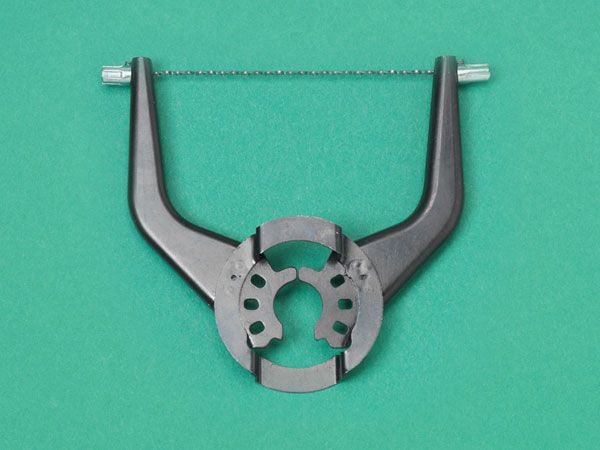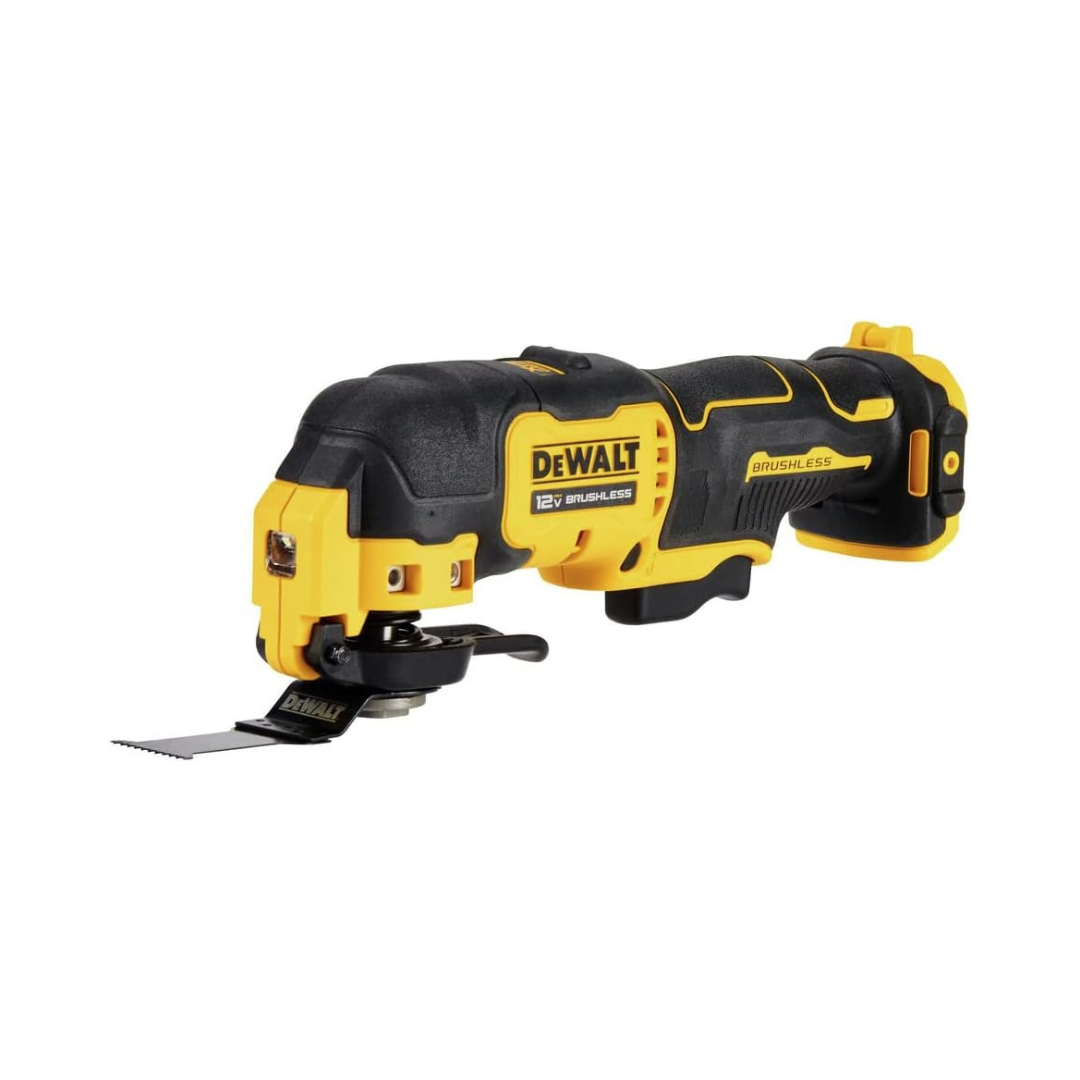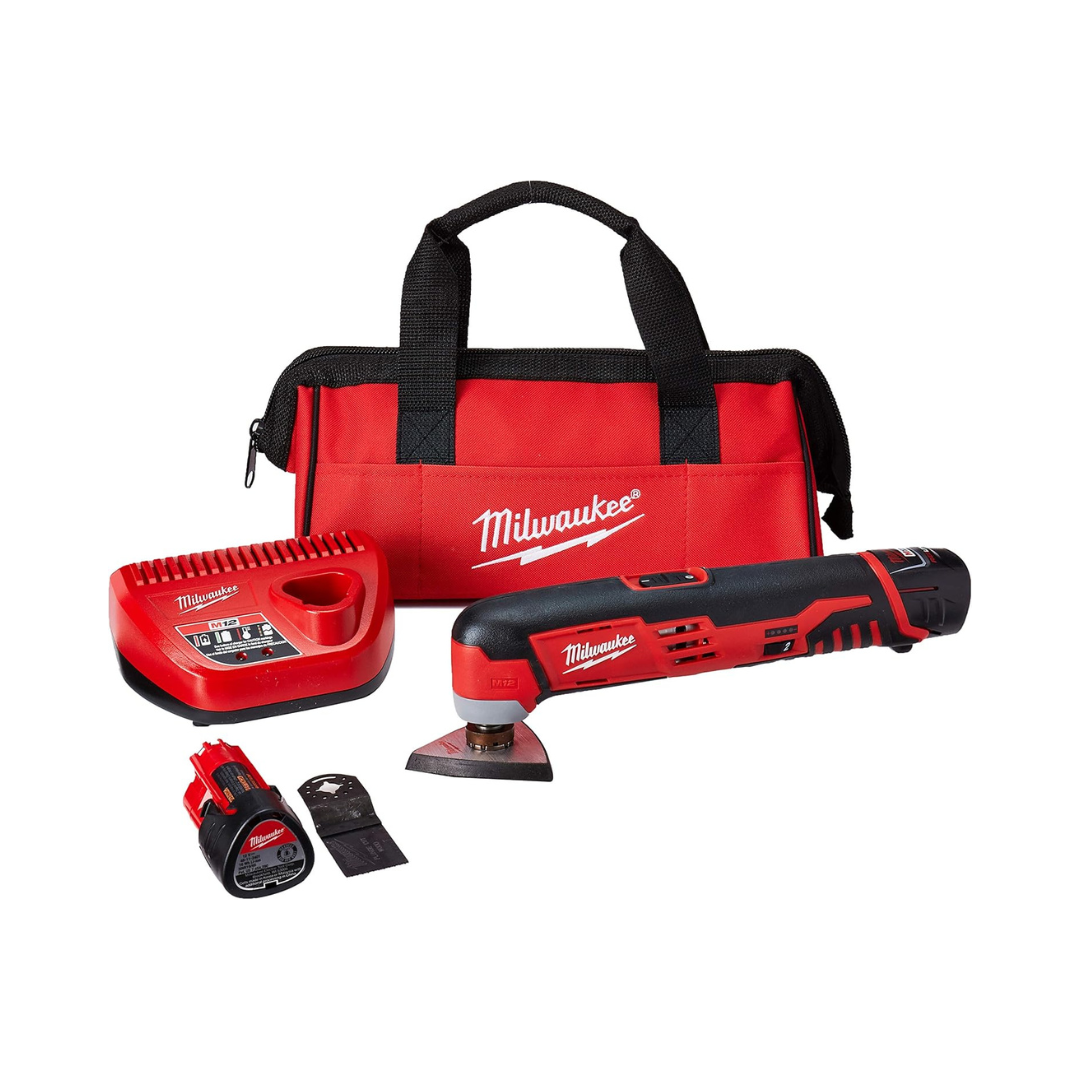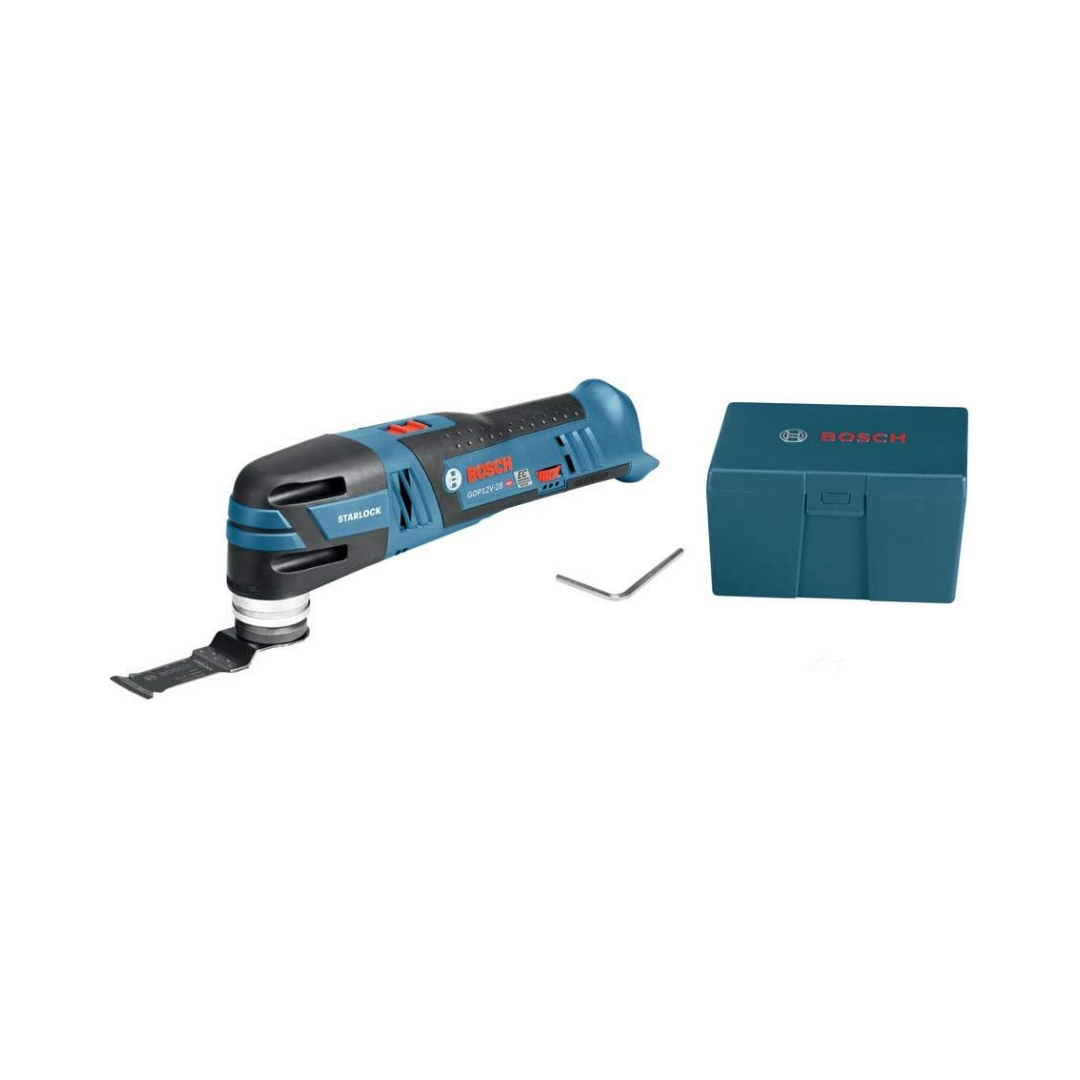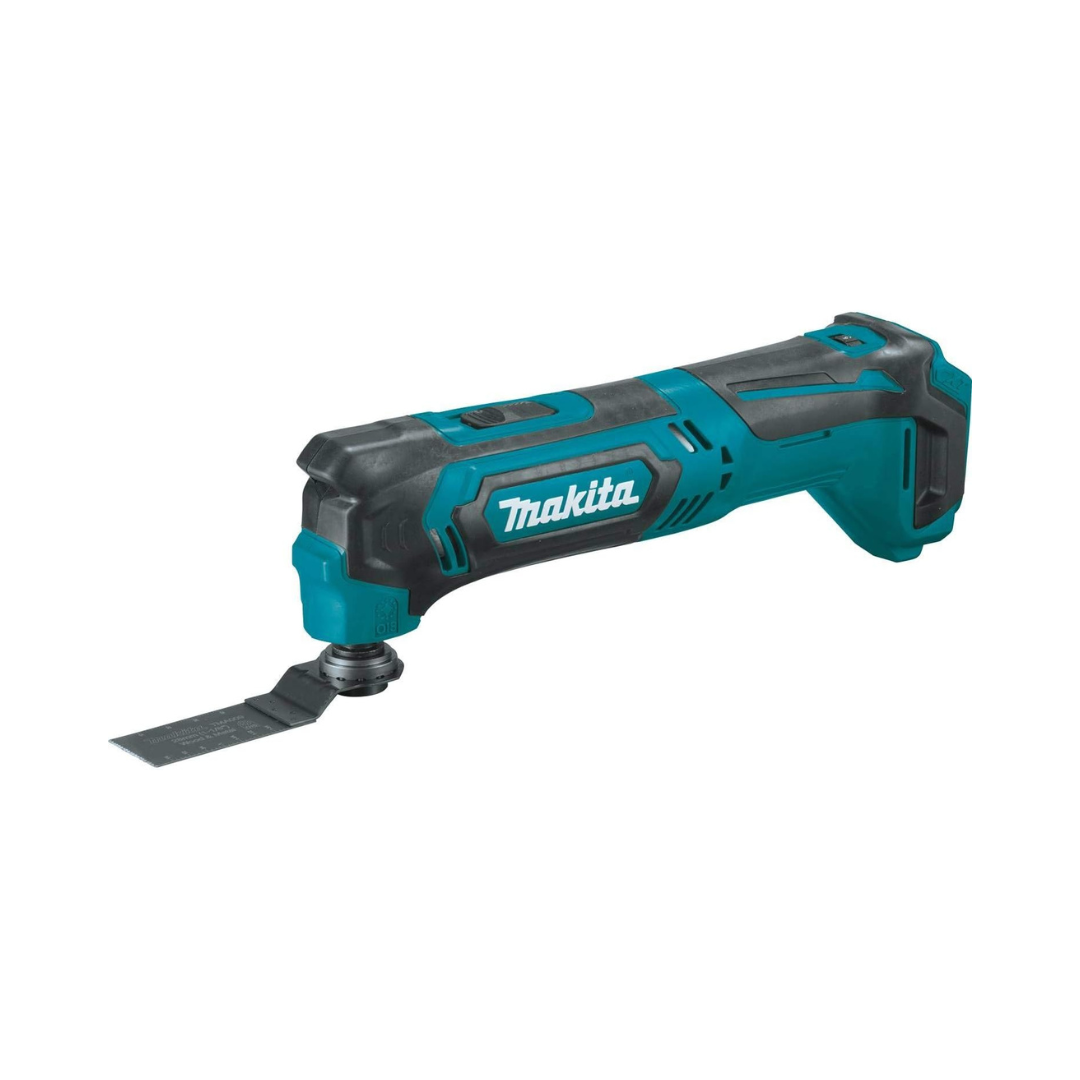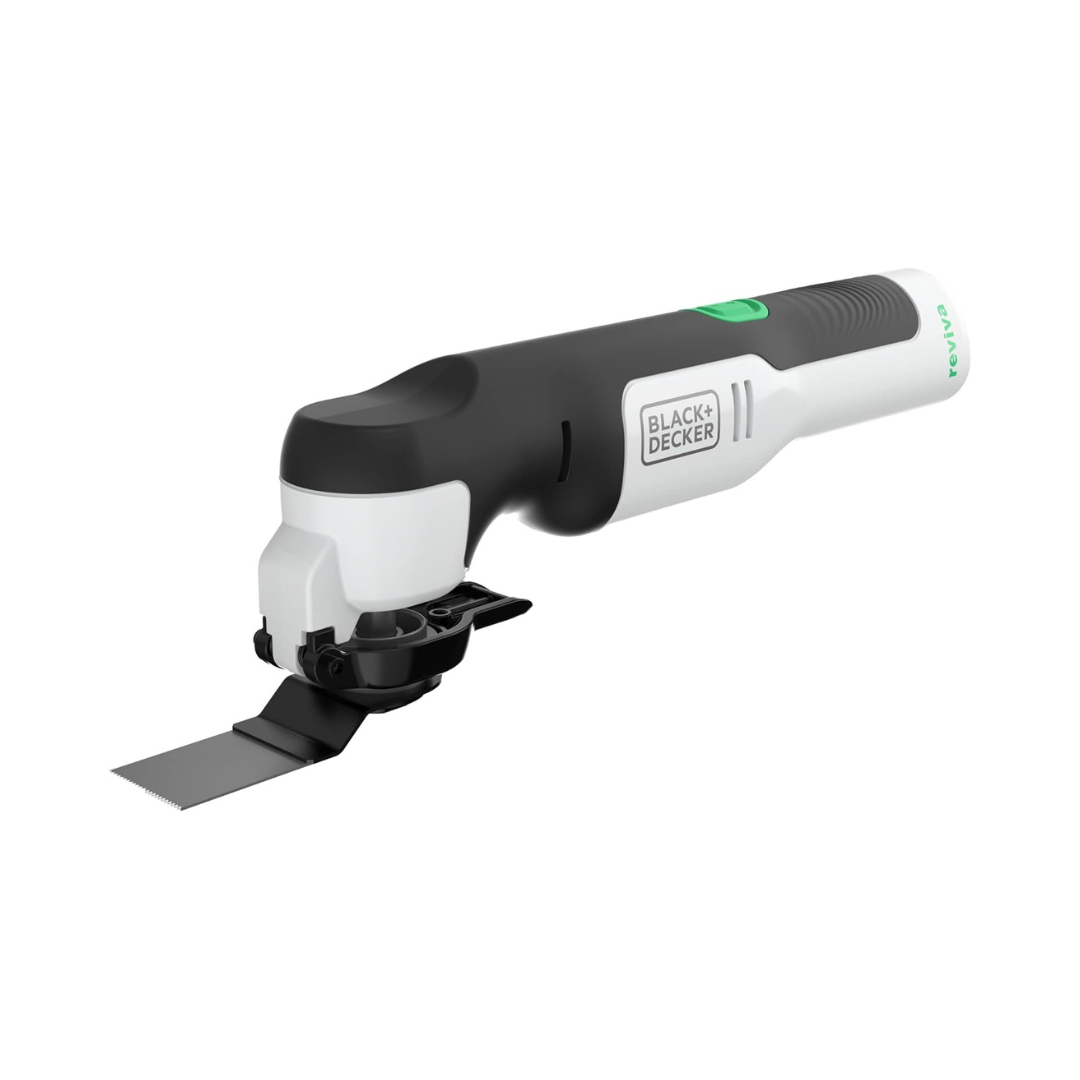An oscillating multi-tool is likely the biggest multi-tasker in your toolbox. These lightweight variable-speed workhorses reach into tight spaces to sand, saw, scrape, and grind virtually any material—from wood to metal to grout.
When buying an oscillating tool, we recommend looking for the following:
- An LED to illuminate dark corners.
- An easy way to swap blades, like a tool-free lever.
- A handy variable-speed dial.
- A slim shape with a tactile grip.
- Rubbery bumpers to protect your workpieces.
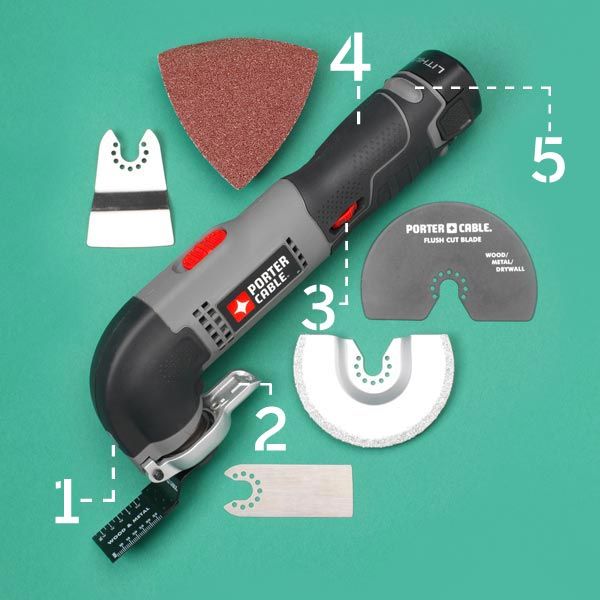
You should also consider getting the right attachments. In the photo above, we show you a few of our favorites. Clockwise from top left, there’s a paint/adhesive scraper, sanding pad, semicircular saw blade, carbide-grit grout remover, caulk scraper, and plunge-cut blade.
Our Top Oscillating Multi-Tool Picks
After examining the market and testing some of the top products ourselves, here are our picks for the best oscillating multi-tools.
Key Features
- 10.3 inches long
- 18,000 oscillations per minute (OPM)
- Includes wood cutting blade, wood metal blade, and universal accessory adapter
Key Features:
- 10 1/4 inches long
- 5,000-20,000 OPM
- Includes wood cutting blade, five sanding pads, adapter, and assorted sanding sheets
Key Features
- 11.2 inches long
- 5,000-20,000 OPM
- Includes a plunge blade, an accessory mounting screw, a hex wrench, and an accessory box
Key Features
- 10.9 inches long
- 6,000-20,000 OPM
- Includes a plunge blade and a multi-tool adapter
Key Features
- 10.1 inches long
- 11,000 OPM
- Includes a charger, wood and metal blade, scrapper blade, sanding plate, and various-grit sandpaper
Techniques for Properly Using a Multi-Tool
There is no shortage of uses for a cordless oscillating multi-tool. Here are a few of the most common ways we use these tools.
Sanding a Corner
Set the speed to low. Start the tool off the work, and when it’s up to speed, lay the pad flat on the work in the corner and move the tool back and forth with the grain. Don’t tip or press down on the pad, and make sure to lift it off the work before turning off the tool.
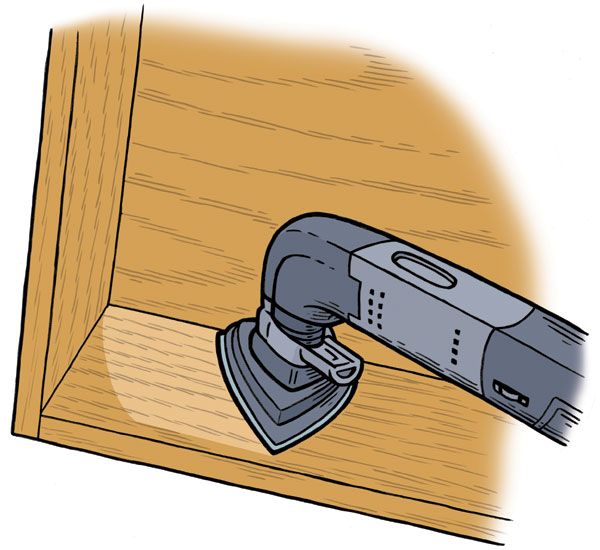
Undercutting Trim for Flooring
Snug a scrap piece of flooring against the casing, as shown, and place a flush-cut saw blade flat against the scrap. Score the casing on low. Make more light passes, ramping up the speed each time until you cut through the trim.
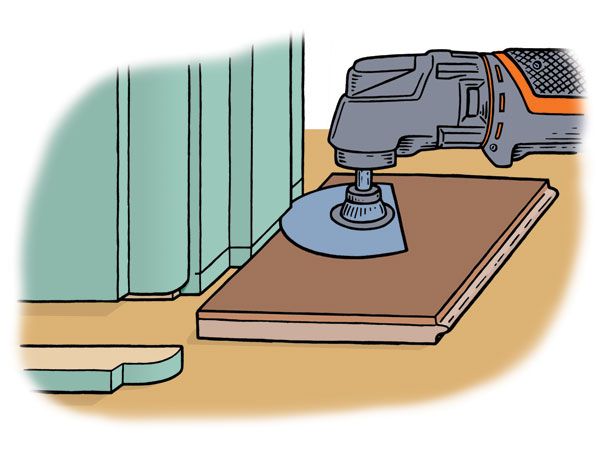
“You can’t push the saw blades for these tools too hard, or you’ll end up with sloppy cuts and worn teeth. It’s better to take your time and make shallow passes,” says Tom Silva, This Old House general contractor.
A Few More Attachments We Love
Once you’re a multi-tool pro, you’ll be ready to move on from the basics. Here are a few more specialty multi-tool attachments we recommend.
Caulk Knife
The double-edged 2¼-inch blade cleanly knifes through stubborn old sealant.
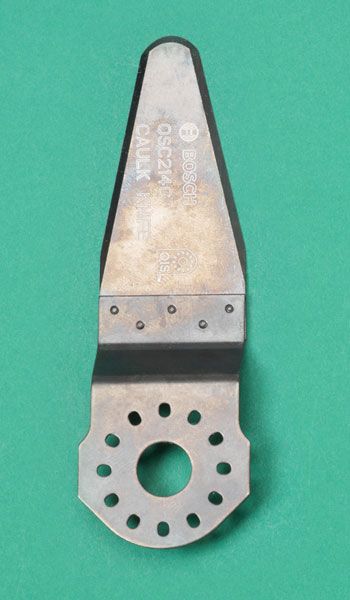
Swing Blade
Its diamonds cut grout without wearing out, while its shape lets it get into tight corners.
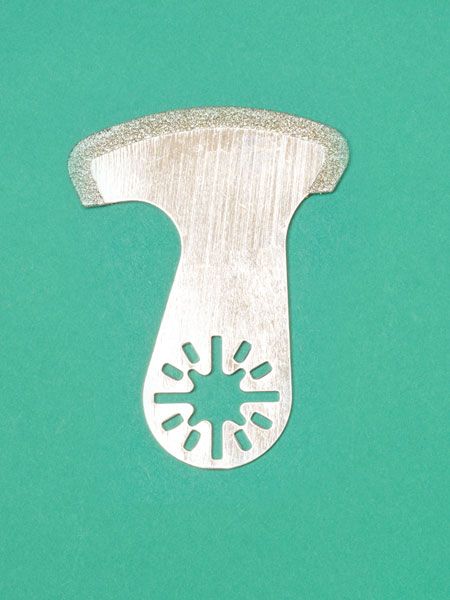
Multiflex
A yoke with a spiral blade enables you to cut curves or copes in wood or plastic.
